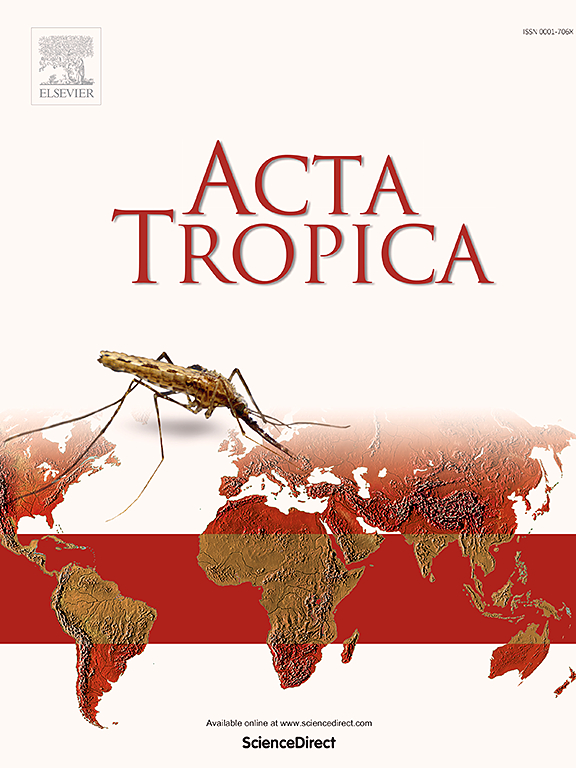Evaluation of the immunogenicity of elephant endotheliotropic herpesvirus glycoprotein B (EEHV-gB) subunit vaccines in a mouse model
IF 2.1
3区 医学
Q2 PARASITOLOGY
引用次数: 0
Abstract
Elephant endotheliotropic herpesvirus (EEHV), a persistent threat, has caused significant mortality among young Asian elephants (Elephas maximus), raising serious concerns for the conservation of this endangered species. Given the urgent need for protective measures, research into EEHV vaccine development has become increasingly critical. This study evaluated the immune response in mice following immunization with an EEHV1A-glycoprotein B (gB) subunit vaccine. The vaccine incorporated gBF1 and gBF2, corresponding to segments of the gB ectodomains I and IV, respectively, along with emulsion adjuvants Montanide™ ISA 206 VG and incomplete Freund's adjuvant (IFA). The findings revealed that both gBF1 and gBF2, when paired with these adjuvants, were capable of inducing strong humoral immune responses against EEHV-gB, as demonstrated by the ability of sera from immunized mice to detect EEHV-gB ex vivo. Additionally, in terms of cellular immunity, the vaccine formulations predominantly activated CD4+ T cells, including both Th1 (IFN-γ+) and Th2 (IL-4+) cells, with no significant activation of CD8+ T cells. If also applicable in elephants, gB-based vaccines would be a significant step forward in the fight against EEHV.
大象嗜内皮性疱疹病毒糖蛋白B (EEHV-gB)亚单位疫苗在小鼠模型中的免疫原性评价
大象嗜内皮疱疹病毒(EEHV)是一种持续存在的威胁,已导致幼小亚洲象(大象)大量死亡,引起了人们对这一濒危物种保护的严重关注。鉴于迫切需要采取保护措施,对EEHV疫苗开发的研究变得越来越重要。本研究评估了eehv1a -糖蛋白B (gB)亚单位疫苗免疫小鼠后的免疫反应。该疫苗结合gBF1和gBF2,分别对应于gB外结构域I和IV的片段,以及乳剂Montanide™ISA 206 VG和不完全弗氏佐剂(IFA)。研究结果表明,gBF1和gBF2与这些佐剂配对时,能够诱导针对EEHV-gB的强体液免疫反应,免疫小鼠的血清能够在体外检测到EEHV-gB。此外,在细胞免疫方面,疫苗制剂主要激活CD4+ T细胞,包括Th1 (IFN-γ+)和Th2 (IL-4+)细胞,而CD8+ T细胞没有显著激活。如果同样适用于大象,那么基于gb的疫苗将是对抗EEHV的重要一步。
本文章由计算机程序翻译,如有差异,请以英文原文为准。
求助全文
约1分钟内获得全文
求助全文
来源期刊

Acta tropica
医学-寄生虫学
CiteScore
5.40
自引率
11.10%
发文量
383
审稿时长
37 days
期刊介绍:
Acta Tropica, is an international journal on infectious diseases that covers public health sciences and biomedical research with particular emphasis on topics relevant to human and animal health in the tropics and the subtropics.
 求助内容:
求助内容: 应助结果提醒方式:
应助结果提醒方式:


